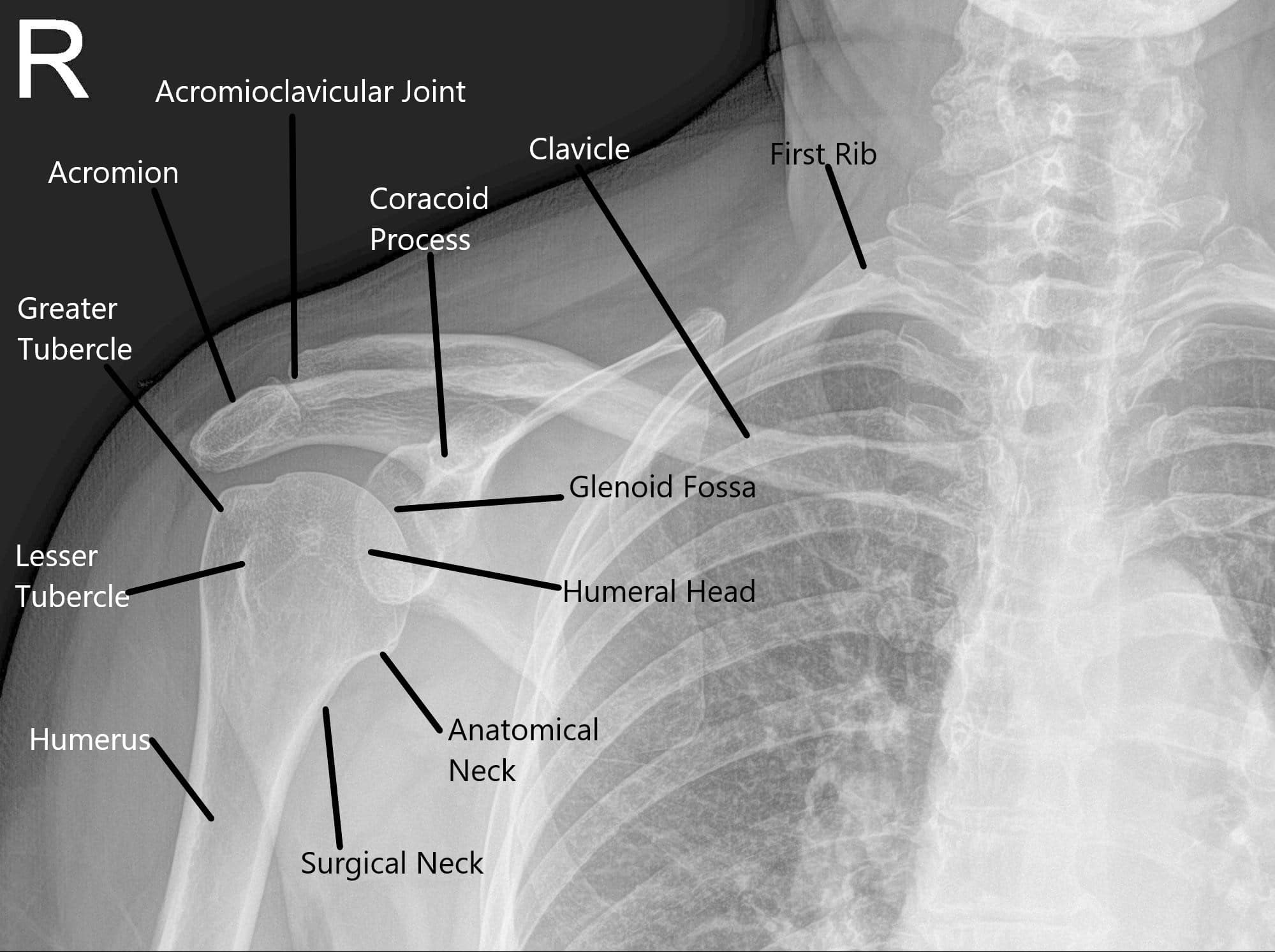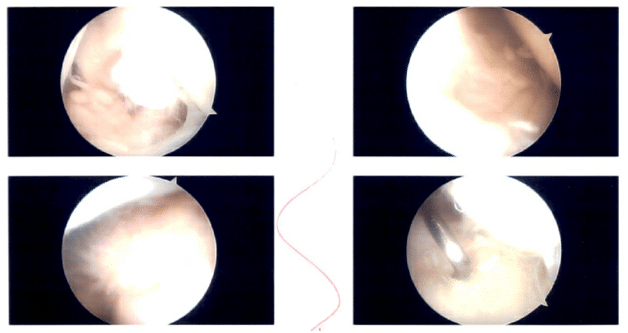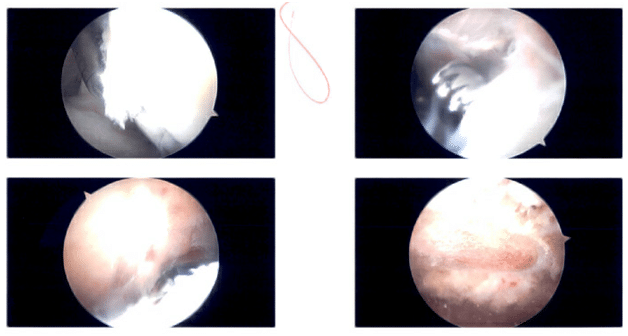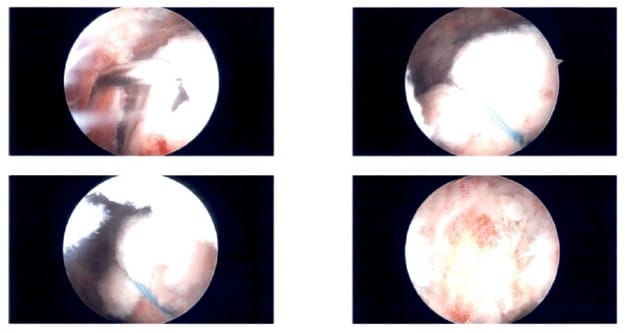Case Study: Management of a 60-year-old Male with
Right Rotator Cuff Tear and Acromioclavicular Joint Arthritis
The patient is a 60-year-old male presenting in our office, with complaints of bilateral shoulder pain right worse than left. The patient works at a grocery store and his work involves significant lifting and reaching overhead. The patient has had cortisone injections and physical therapy in the past and has had not much relief.
The pain is severe in intensity. The patient describes the pain as sharp, dull, stabbing, throbbing, aching. The pain is intermittent and does disturb sleep. The pain is associated with numbness and tingling. The pain is not associated with swelling, bruising, radiating pain, weakness, bowel or bladder abnormality, gait problem, giving way, or limping, hand function difficulty.
The problem has been getting worse since it started. Lifting makes the symptoms worse. Rest and ice make the symptoms better. The patient has undergone surgery for the lower back a year ago. The patient has high cholesterol and high blood pressure. The patient has no allergies. The patient does not smoke. The patient is currently taking medication for cholesterol and blood pressure.
The patient is calm conscious cooperative and well oriented to time place and person. Upon examination of the right shoulder, the patient sits with the scapula protracted and depressed. They are tender to palpation over the anterior supraspinatus and proximal biceps. There is mild palpable crepitus in the subacromial space with ranging.
The patient has a restricted range of motion at the last 20 degrees of overhead abduction and discomfort with above shoulder range of motion. The patient has discomfort with impingement maneuvers Whipple testing. The shoulder is stable on the examination. They have 5/5 strength and are neurovascularly intact distally. There are no erythema, warmth, or skin lesions present.
On examination of the left shoulder, the patient had similar findings and had a restricted range of motion at the last 20 degrees of overhead abduction and discomfort with above shoulder range of motion.
X-Ray of the right shoulder suggested degenerative changes of the acromioclavicular joint.

X-ray showing AP view of the right shoulder.
MRI of the right shoulder suggested intra-substance tear anterior glenoid labrum. Partial tear rotator cuff distal supraspinatus tendon with adjacent lateral subdeltoid bursal effusion. Supraspinatus tendinopathy and Acromioclavicular hypertrophic changes associated with impingement syndrome.
We discussed the treatment options for the patient’s diagnosis, which included: living with the extremity as it is, organized exercises, medicines, injections, and surgical options. We also discussed the nature and purpose of the treatment options along with the expected risks and benefits. The patient has expressed a desire to proceed with surgery.
Plan: Right Shoulder rotator cuff repair, subacromial decompression, acromioplasty distal clavicle excision.
The patient also understands there is a long rehabilitative process that typically follows the surgical procedure. The patient expressed an understanding of these risks and has elected to proceed with surgery.
PREOPERATIVE DIAGNOSES:
- Rotator cuff tear of the right shoulder.
- AC arthritis, right shoulder.
POSTOPERATIVE DIAGNOSES:
- Rotator cuff tear, right shoulder.
- Acromial spur, right shoulder.
- AC arthritis, right shoulder.
- Glenohumeral Arthritis Grade 3-4 Right shoulder
- Type 1 labral degenerative tear right shoulder
OPERATION:
- Arthroscopic right shoulder extensive debridement.
- Arthroscopic rotator cuff repair, right shoulder.
- Arthroscopic subacromial decompression, right shoulder.
- Arthroscopic acromioplasty, right shoulder.
- Arthroscopic distal clavicle excision, right shoulder.
DESCRIPTION OF PROCEDURE: The patient was taken to the operating room where general anesthesia was induced. The supraclavicular block was performed before the intubation. The patient was put into a lateral position along with beanbag support so that the right shoulder was up.
The right shoulder was held in adduction and prepped and draped aseptically in the usual fashion. Time-out was called. A preoperative antibiotic was given. The right shoulder was put into traction with weight. The entry portal was made in the posterolateral corner of the acromion.
The scope was entered into the glenohumeral joint. An examination of the glenohumeral joint was performed. There was grade 3 to grade 4 arthritis of the glenoid as well as the head of the humerus. There was fraying of the labrum. The rotator cuff tear could be identified.

Intraoperative Shoulder Arthroscopic Images.
Debridement of the subscapularis, labrum was performed. Debridement of the head of the humerus was also performed. Marking PDS suture was passed through the rotator cuff tear. Now the scope was entered into the subacromial space. There was extensive bursitis. Subacromial decompression was performed using a shaver.

Intraoperative Shoulder Arthroscopic Images.
There was fraying of the acromion along with a curved configuration (Type 2 acromion). The acromion was cleaned using a thermal wand followed by an acromioplasty with a bur. The CA ligament was also released. After a thorough acromioplasty, the AC joint was examined and found to be degenerative. 1 cm of distal third clavicle excision was also performed using a wand and followed by a bur. Final pictures were taken. Now the rotator cuff tear was seen and cleaned. The footprint of the rotator cuff was prepared.

Intraoperative Shoulder Arthroscopic Images.
Accessory incisions were given for the lateral portal as well as posterosuperior portals for the insertion of the anchor. A Healicoil peak anchor was used. The two-tailed anchor was used and inserted into the head of the humerus. The tails were passed in a mattress suture pattern to the rotator cuff tear. The knots were tied.
The anterior knot was repaired at medial row only. The posterior knot was put in a double-row repair using a multi fix anchor. Final pictures were taken. The shoulder was thoroughly washed and drained. The closure was performed using #4-0 nylon. The dressing was done using Adaptic, 4×4, ABD, and tape. The right lower extremity was put into an abduction pillow shoulder immobilizer. The patient was extubated and moved to recovery in a stable condition.
Disclaimer – Patient’s name, age, sex, dates, events have been changed or modified to protect patient privacy.

Dr. Suhirad Khokhar
My name is Dr. Suhirad Khokhar, and am an orthopaedic surgeon. I completed my MBBS (Bachelor of Medicine & Bachelor of Surgery) at Govt. Medical College, Patiala, India.
I specialize in musculoskeletal disorders and their management, and have personally approved of and written this content.
My profile page has all of my educational information, work experience, and all the pages on this site that I've contributed to.
